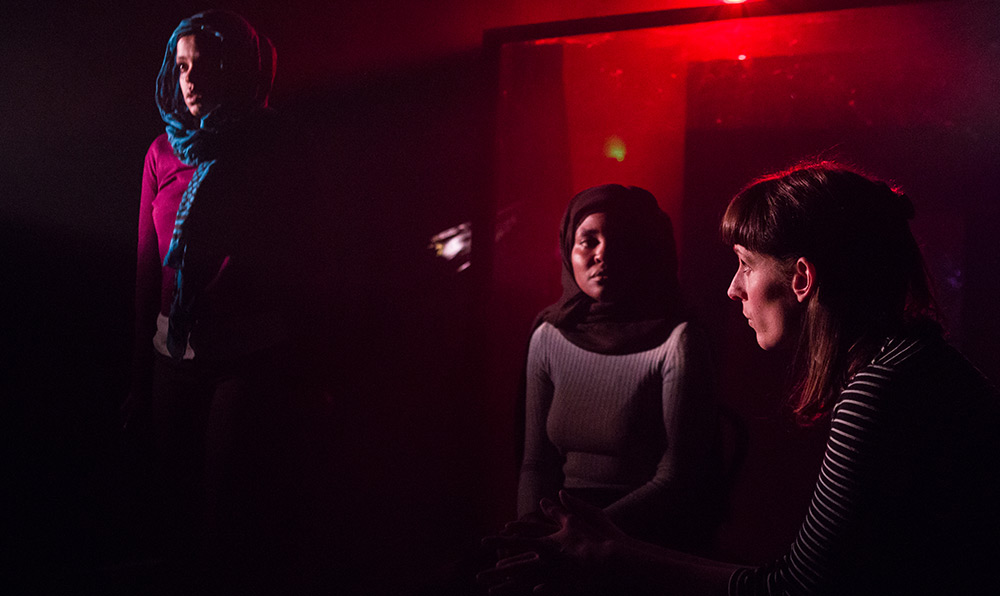
The Glass Will Shatter
As The Glass Will Shatter arrives at Clapham’s Omnibus Theatre, connor sturges sees how the piece presents racial and cultural divisions in the UK’s educational system.
Bordered by a large pane of glass and somewhat framed by two black boards, Rebecca (Josephine Arden) and Jamilah (Almo Eno) open The Glass will Shatter with seemingly standard, albeit awkward, chitchat. Each woman’s words are projected on the relevant board positioned to the stage’s side however, and an attentive focus to their language makes it clear this production aims to throw much more than generic conversation into the mix as it soon develops questions in audiences’ minds.
The play is short and consequently, after the opening scene, picks up momentum with haste. Rebecca, haunted by the memories of a troublesome girl she taught in her teaching years, appears to reconnect with her ex-colleague and former confidant as her deteriorating mental health leads her to revisit troubled times for answers and, (she hopes?) closure.
Flashbacks are the primary method adopted by writer Joe Marsh. These are effective in their aim of encouraging reflection and little confusion is created over what happens when, unlike many pieces that use the technique less skilfully. Language is key here, with allusions both of the brash and subtle kind. Stereotypes are presented early on with Rebecca’s preference for ‘soya lattes’ and enjoyment of ‘hot yoga’, whilst cultural misunderstanding and ignorance is delivered from the white female lead’s comments at the mention of terrorist organisations. Jamilah’s comment that in schools children of non-white backgrounds are labelled ‘a gangster or an extremist’ further places emphasis on the assumptions placed on children from non-white backgrounds who refuse to conform to an increasingly rigid educational structure.
Aside from the dialogue, the play is tinged with symbolism in its design and physicality. Are the identical yet separated boards symbolic of the growing race and cultural divides within the UK’s educational system? When Rebecca leads the conversation they are positioned behind the glass, but move in front of the pane when Jamilah directs the conversation. Are such staging decisions aiming to allude to notions of ‘whiteness’, such as the privilege of relative protection skin colour and atheism can bring? These are thoughts, amongst many others, audiences are intended to leave the theatre with – particularly following the show’s culmination; one that, undoubtedly, intends to leave viewers questioning their perception of race and culture within the education system and beyond.
Although the production is representative of the issues the dialogue aims to tackle, it does create difficulties and often detracts attention from the acting. Despite the symbolism, whatever it’s intended to be, the projection of the characters’ dialogue on the black boards in the opening scene is often distracting, particularly when projections are too fast or fall behind the speed of dialogue, as well as when the speech alters slightly from the text. However, the social dilemmas presented to theatre-goers as the play progresses ultimately leaves such distractions as afterthoughts and at the very least, if not all audiences leave with a profounder cognisance of the social issues presented, they’ll leave questioning their own understanding and presumptions for a while afterwards.
⭐⭐⭐⭐






